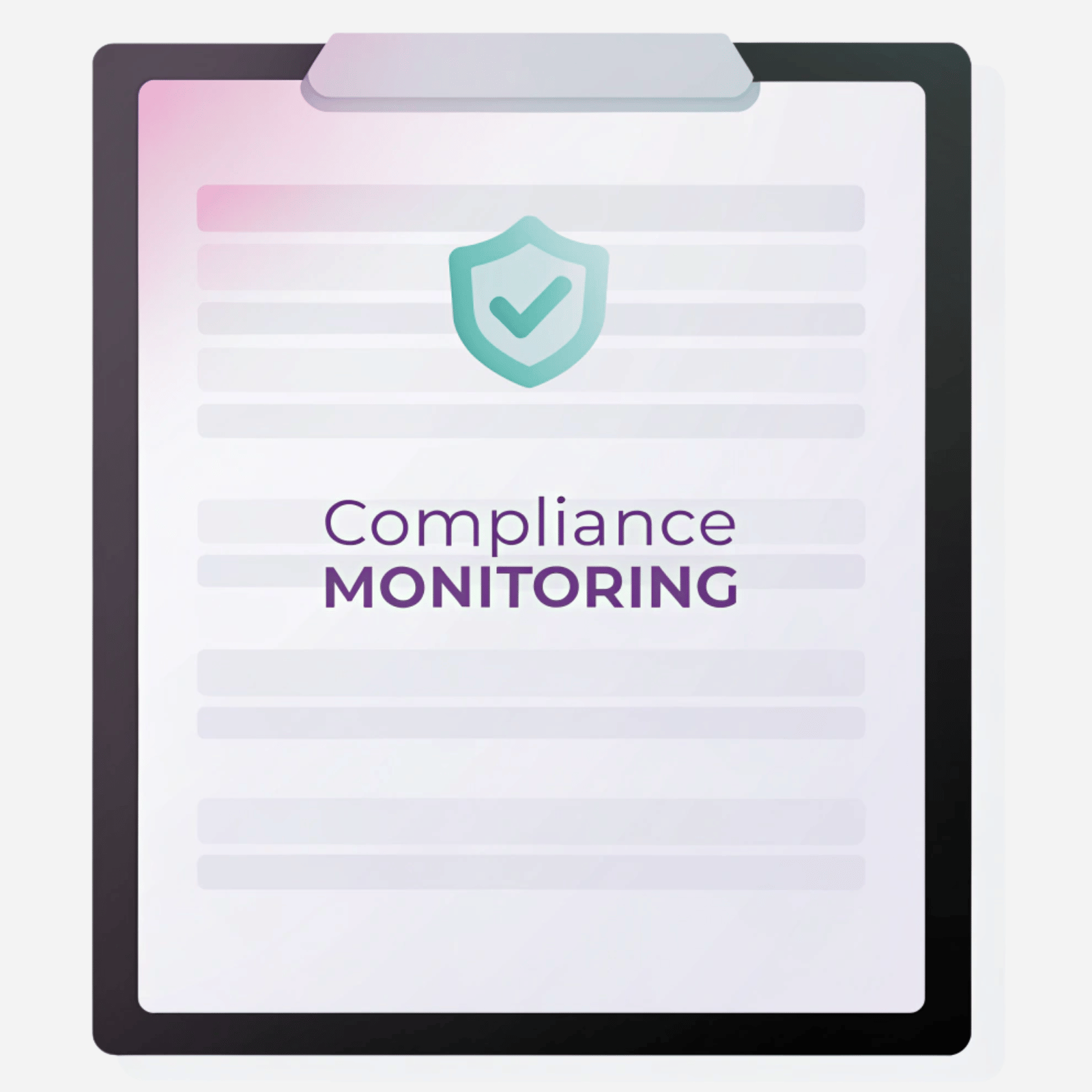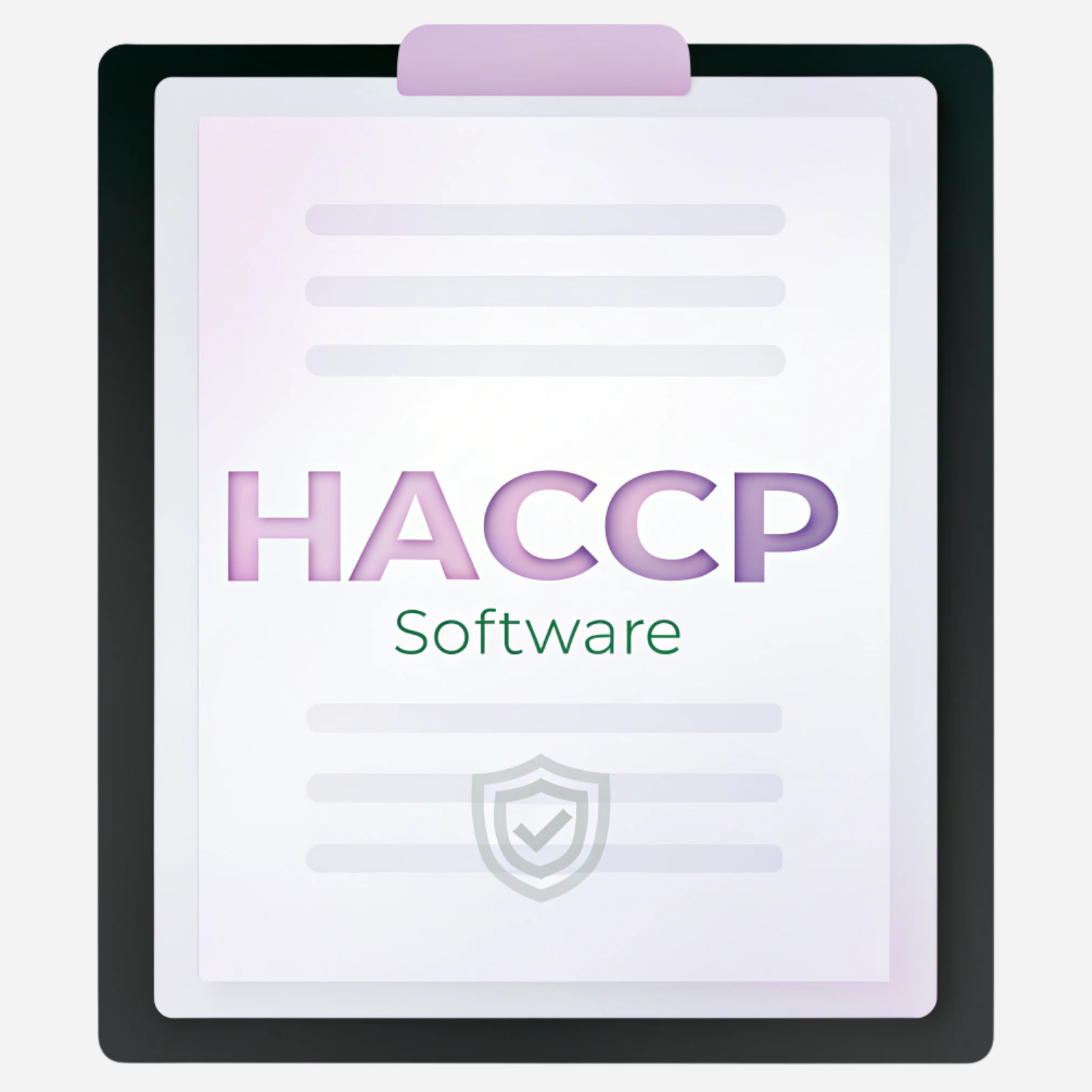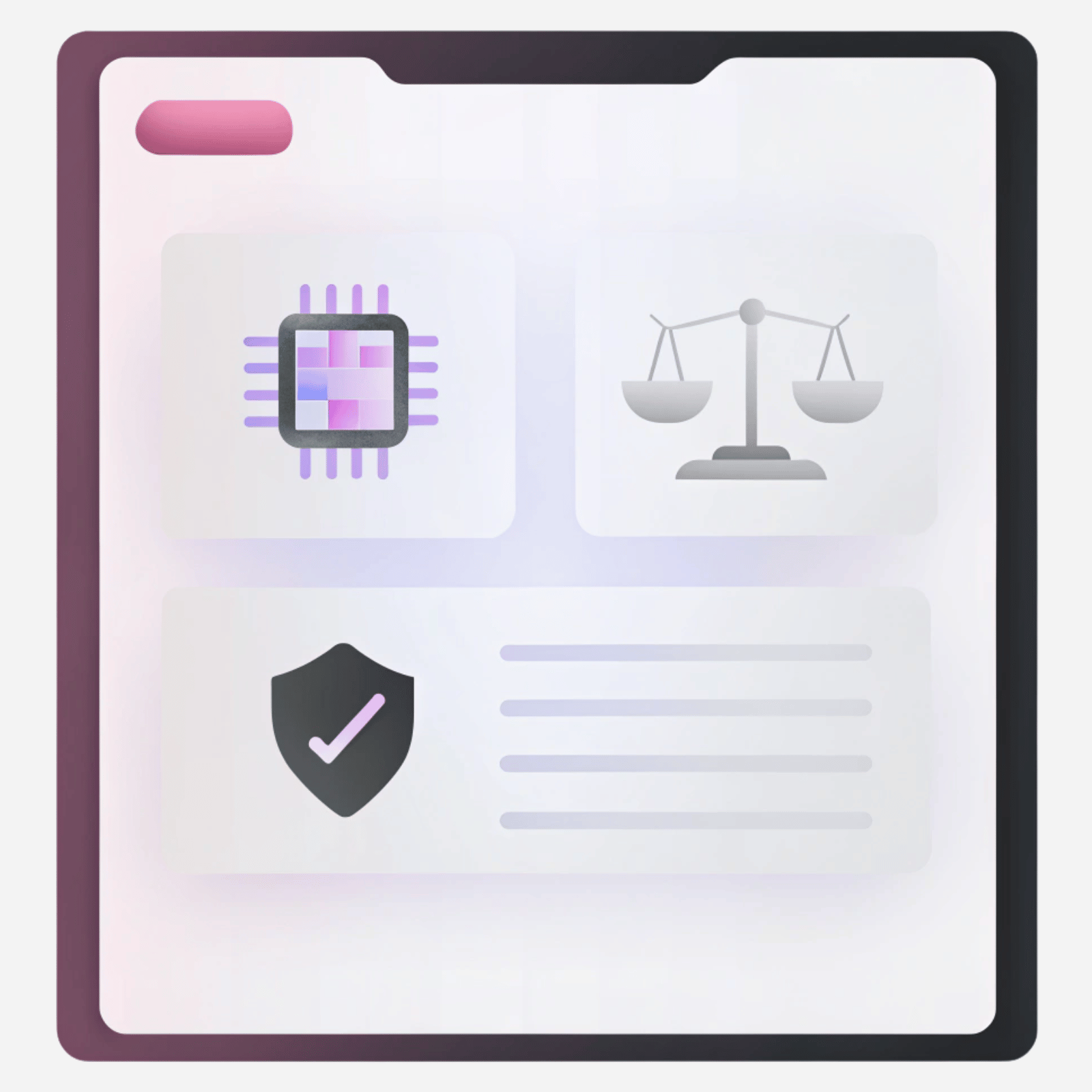
Introduction
Even the most well-intentioned food safety teams make critical HACCP mistakes, and in today’s complex supply chain, those errors can lead to severe consequences. Some common HACCP problems that continue to plague the food industry include:

These oversights expose companies to costly recalls and regulatory penalties.
The reality is, traditional HACCP plans often fall short because they rely heavily on manual processes, static documentation, and subjective judgment. As food safety regulations tighten and data volumes grow, these gaps become harder to ignore.
That’s where Artificial Intelligence steps in.
In this article, we’ll explore 9 of the most common HACCP mistakes made by food businesses today - and show how AI-powered tools can help prevent them by automating hazard analysis, improving traceability, and enhancing decision-making.
Common HACCP Mistakes
HACCP (Hazard Analysis and Critical Control Points) is a globally recognized system designed to ensure food safety by identifying, evaluating, and controlling hazards throughout the food production process. Its foundation is built on seven core principles:
- Conducting a hazard analysis,
- Identifying critical control points (CCPs),
- Establishing critical limits,
- Monitoring procedures for each CCP,
- Establishing corrective actions,
- Verifying that the system works effectively, and
- Maintaining proper documentation and record-keeping.
When correctly applied, these principles help prevent foodborne illnesses and maintain trust in the food supply. However, in real-world settings, HACCP often encounters problems that undermine its effectiveness. These HACCP problems can result from a lack of ongoing commitment, inadequate training, or superficial compliance focused more on satisfying regulations than on ensuring safety. Over time, this can lead to a degradation of the system into routine paperwork, leaving critical gaps in hazard control.
This section outlines the most common HACCP mistakes that contribute to such failures, highlighting how missteps in applying or maintaining these seven principles can weaken food safety systems at both operational and national levels. Let’s start!
1. Incomplete or Outdated Hazard Analysis
More than 10 years ago, in 2013, the infamous “Horsemeat scandal” shook Europe when beef products were found to be adulterated with horsemeat. Beyond the headlines, this incident revealed a deeper issue - HACCP systems that failed to recognize or update hazards tied to changes in the supply chain. This is a prime example of how HACCP mistakes can quietly accumulate until they lead to a crisis.
Hazard analysis is the backbone of any HACCP plan, but in practice, it's often neglected or treated as a one-time setup task. As production methods evolve, new suppliers are introduced, or product lines change, teams rarely revisit or refresh their hazard assessments. This leads to outdated or incomplete plans, one of the most common and risky HACCP problems.
Critical hazards may be missed altogether, leaving food businesses vulnerable to both safety risks and regulatory penalties.
How AI Can Help: Instead of relying on manual reviews, AI Agent can automatically analyze any uploaded SOPs, process documents, or product specs. AI extracts relevant information, identifies potential hazards, and flags missing or outdated entries. For example, if a new reheating step appears in a recently uploaded document, the system will detect it, recommend hazard entries based on industry data, and suggest updating your HACCP plan accordingly.
The result? No more blind spots, no more outdated assumptions. AI ensures your hazard analysis evolves with your operation, keeping your plan current, complete, and audit-ready.

2. Poor or Missing Documentation
Imagine this: a food safety auditor walks into your facility and asks to review your HACCP plan. You open a folder… only to find missing process steps, outdated CCPs, and an SOP last updated two years ago. This is not just inconvenient - it’s a compliance risk that could result in warnings, fines, or even shutdowns.
Unfortunately, this scenario plays out more often than it should. Inconsistent or outdated documentation is one of the most common and costly HACCP mistakes across the food industry.
According to field studies, many food businesses maintain HACCP documents more as a formality than a living system. As production evolves, documentation often doesn’t keep up. These HACCP problems not only lead to audit failures but also weaken the entire food safety framework by allowing unrecognized hazards to persist.
How AI Can Help: AI fundamentally changes how documentation is created and maintained. Instead of relying on templates or manual entry, systems automatically generate HACCP documentation - including PDFs, SOPs, CCP descriptions, and flowcharts - by analyzing your existing files (SOPs, XOPs, and product data).
Here’s how it works:
- You upload your existing materials.
- The AI parses every document to extract relevant process steps, team info, product groups, and hazards.
- Missing or outdated elements are flagged, and the system suggests updates or new entries.
- With a single click, you can apply these updates, ensuring your HACCP plan remains consistent, complete, and audit-ready.
This prevents one of the most frequent HACCP mistakes and gives teams confidence that their plan truly reflects reality.

3. Manual Setup Is Error-Prone and Time-Consuming
Picture a small food business racing to finalize its HACCP documentation before an upcoming audit. The team is buried in SOPs, ingredient specs, and flow diagrams. With limited time and resources, they try to build the HACCP plan manually - drafting flowcharts by hand, defining process steps from memory, and copying hazard tables from old templates.
In the rush, a key hazard linked to temperature control during reheating is overlooked. It’s a common slip - one of many HACCP mistakes that can lead to regulatory issues or, worse, endanger public health. Errors creep in when flowcharts are incomplete, CCPs are misidentified, or process steps are inconsistent with actual operations.
How AI Can Help: AI-powered systems now offer a faster, smarter alternative. By analyzing uploaded documents - such as SOPs, process descriptions, and product data - AI can automatically identify process steps, generate accurate flowcharts, and suggest relevant hazards and Critical Control Points (CCPs).
This approach reduces the risk of oversight, ensures consistency across documentation, and dramatically shortens the time needed to build a complete HACCP plan. Teams remain in control, with the ability to review and adjust as needed, but the heavy lifting is done intelligently and efficiently.

4. Lack of Cross-Referencing Between Documents and Plan
Imagine this: a food processor proudly presents their HACCP plan during an audit - flowcharts are in place, CCPs are documented, and the risk assessments seem thorough. But when the auditor asks for the corresponding SOPs (Standard Operating Procedures) that detail how each process step is executed and controlled, confusion sets in.
Some procedures are missing. Others are outdated or misaligned. The auditor notes critical inconsistencies. The result? A compliance failure, due to the lack of connection between the plan and the documents that support it.
While businesses may have the required documents and processes in place, failing to synchronize SOPs with the actual HACCP plan introduces serious vulnerabilities. These gaps create a false sense of preparedness and are among the leading HACCP problems that lead to audit issues, legal exposure, or food safety risks.
How AI Can Help: Artificial intelligence can resolve this issue by acting as a bridge between documentation and operational planning. Modern AI systems can:
- Parse and analyze uploaded SOPs, automatically extracting key steps, equipment, and procedures.
- Map SOP content to specific HACCP process steps, ensuring each CCP or hazard is supported by documented procedures.
- Identify missing or outdated documents and prompt the user to update or generate them.
- Flag inconsistencies between written procedures and the HACCP plan, preventing audit surprises before they happen.
By automating the cross-referencing of documents with the HACCP framework, AI helps maintain a living, self-validating food safety system - one that reduces risk, enhances audit readiness, and eliminates one of the most preventable HACCP mistakes in the industry.

5. No Systematic Gap Analysis
Germany faced a deadly outbreak of E. coli O104:H4 that left over 50 people dead and thousands ill. Investigations pointed to contaminated sprouts, but the deeper issue was that existing food safety systems - including HACCP plans - failed to catch the hazard early. Why? Because no one had re-evaluated the risks tied to emerging food trends and changing production inputs.
This highlights one of the most dangerous yet common HACCP mistakes: the absence of structured, ongoing gap analysis. Producers often assume that once a HACCP plan is created, it's complete. But in reality, production conditions, regulations, and hazards evolve - yet many HACCP problems arise because plans don’t evolve with them. This leaves hidden weaknesses in place, from missing CCPs to overlooked hazards or outdated control measures.
How AI Can Help: AI can prevent this by performing continuous, intelligent analysis across all components of a HACCP plan. By parsing process steps, SOPs, and product data, AI can identify where critical information is missing, duplicated, or inconsistent. For instance, if a reheating step lacks an associated hazard or a CCP is missing monitoring criteria, AI can flag the issue and recommend specific corrective actions.

6. Poor Team Involvement and Ownership
Even the most carefully written HACCP plan can fail if no one truly owns it. In many small and mid-sized food businesses, HACCP teams are created out of necessity, but once the paperwork is filed, responsibilities fade into the background. Team members often don’t know what their role is, what process steps they’re accountable for, or how their actions impact food safety.
This disconnect leads to missed monitoring, delayed corrective actions, and ultimately, preventable hazards.
It's one of the most underestimated HACCP mistakes: assuming that simply naming a team is enough. But without clear ownership, the plan exists on paper only - and that’s where HACCP problems begin.
How AI Can Help: AI Agents can bring clarity where confusion typically reigns. By automatically parsing uploaded SOPs, org charts, and internal documents, AI identifies relevant team members and assigns them to specific HACCP roles. Instead of relying on memory or fragmented spreadsheets, businesses get a structured, up-to-date map of responsibilities linked to every process step and hazard.
This eliminates overlap, exposes gaps, and makes accountability visible. When each team member knows exactly what they’re responsible for - and that it’s traceable - engagement rises, and follow-through improves.

7. Failure to Adjust for Product Variations
In 2024, a recall of plant-based deli meats due to Listeria monocytogenes contamination highlighted a growing issue: the rise of new food categories without corresponding updates to HACCP plans. Many producers had simply adapted existing meat-product HACCP frameworks, failing to account for the different risks of high-moisture, non-thermal processed alternatives.
This kind of oversight is one of the more subtle yet damaging HACCP mistakes. Applying the same hazard analysis across diverse product groups - like dairy, fermented foods, or ready-to-eat meals - ignores the reality that each has its own unique contamination pathways, critical limits, and processing needs. When variations aren’t recognized, HACCP problems such as missing CCPs or inadequate critical limits inevitably surface.
How AI Can Help: AI systems can automatically parse product specifications, SOPs, and historical documentation to detect what makes each product group distinct. Instead of relying on templated logic, these tools dynamically generate tailored process steps and hazards specific to each category. For example, AI can identify that a cold-pressed juice line requires controls for pH and refrigeration, not just standard hygiene practices.
By adapting HACCP plans to the nuances of every product, AI eliminates the risk of underestimating critical hazards and helps teams stay ahead of evolving production profiles.

8. Non-Dynamic Systems That Don’t Evolve
Imagine a busy food production facility where the HACCP plan was created years ago and then filed away, untouched and unchanged, despite new equipment, ingredients, or regulations. This “drawer plan” sits static, failing to reflect the facility’s current risks and controls.
HACCP mistakes often arise because these systems become outdated, turning into static documents that don’t evolve with changing processes or emerging hazards. When HACCP plans are not regularly updated, new risks can go unnoticed, compliance gaps appear, and food safety may be compromised.
How AI Can Help: AI-powered HACCP management tools continuously analyze incoming data, regulations, and operational changes to dynamically update the HACCP plan. By automatically identifying new hazards, control measures, or SOP revisions needed, AI ensures the system evolves in real time. Notifications prompt timely reviews and adjustments, transforming static HACCP documents into living, responsive safety frameworks, reducing common HACCP problems linked to outdated plans.

9. Lack of Audit Readiness
Imagine the panic when an unexpected food safety inspection is announced - operators scrambling to gather documents, cross-check procedures, and assemble HACCP records at the last minute. This common scenario often leads to incomplete or inconsistent documentation, putting compliance at risk and potentially resulting in costly penalties or operational delays.
HACCP systems frequently fall short on audit readiness because the documentation isn’t maintained dynamically or easily accessible. When inspections come, teams waste valuable time hunting for data instead of confidently demonstrating their food safety controls.
How AI Can Help: AI can transform audit readiness by automatically generating fully structured, up-to-date HACCP plans and related documentation on demand. AI-powered systems continuously monitor and organize compliance data, producing auditor-ready reports with just a click. This eliminates last-minute scrambling and ensures operators are always prepared with accurate, reviewable documents, making inspections smoother and reducing the risk of HACCP problems caused by poor documentation management.

Conclusion
As far as we know about these common HACCP mistakes, it’s clearer how compliance can slip without the right processes in place. Now, think about your own HACCP system: Are your plans truly dynamic and up to date? How prepared are you when an audit is announced unexpectedly?
The solution is in your hands. You can continue relying on manual, time-consuming methods, or choose to leverage AI-powered tools that simplify compliance and keep your HACCP plans always inspection-ready. Platforms like IONI offer smart, automated solutions that help food operators avoid these pitfalls and confidently manage food safety risks.
What will your next step be? With the right technology, transforming your HACCP system from a source of headaches into a seamless, reliable process is completely achievable.









